#ecology of middle earth
Text
The Wild Kine of Araw
Genus : bovine
Name meaning : wild ox of Oromë
History : Legends claimed they were descendants from Oromë's personal herd of cattle, so they were named Kine of Araw (Araw being the sindarin form of Oromë). They were the quarry of Vorondil the hunter, an ancestor of the ruling stewards of Gondor, and it was he who cut the horn from a kine and made the Great horn out of it, that would later be used by Boromir before his death.
Description : They're barely described at all, save for a brief mention of 'wild white kine' in the appendices of the Lord of the rings, which seems to hint that eventually the Kine of Araw in middle Earth became a sub-species found only "near the Sea of Rhûn" as opposed to being pure Kine of Araw. Which is also supported by the consistent use of the phrase 'wild kine/ox' when describing the history of Boromir's horn. They're also said to be hardier and wilder than any other species of ox in middle Earth.
Influences : In an unpublished manuscript in the Bodleian library, tolkien likens the wild kine to aurochs, an extinct wild ox species that domestic cattle stem from.
Similar species to use as a reference :
Aurochs
"These are a little below the elephant in size, and of the appearance, color, and shape of a bull. Their strength and speed are extraordinary; they spare neither man nor wild beast which they have espied. These the Germans take with much pains in pits and kill them. The young men harden themselves with this exercise and practice themselves in this sort of hunting, and those who have slain the greatest number of them, having produced the horns in public, to serve as evidence, receive great praise." - Julius Caesar describing aurochs in his History of the Gallic War.
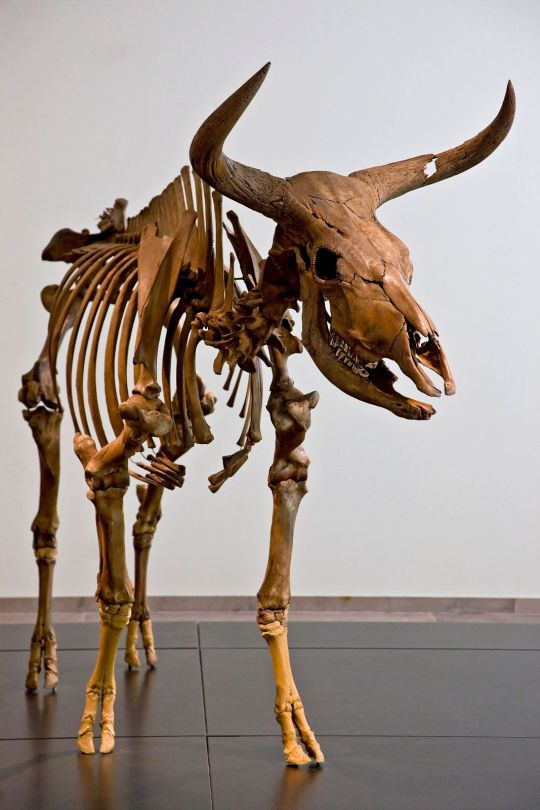

Since aurochs had been extinct at the time tolkien lived and so little is mentioned about the wild Kine of Araw, its impossible to know how closely tolkien imagined the two species to look, however there are a number of breeds that still exist today that have similar colouring, confirmation and behaviour to both aurochs and wild kine of Araw.
Pajuna cattle
The closest living relative to aurochs in the world, certain lineages are thought to share similar colours and markings with the aurochs and they share the same forward facing horns. They're extremely hardy cattle that have adapted to harsh living conditions.


Heck cattle
Bred by Heinz and Lutz Heck to be a modern auroch in the 1920s - 1930s, they naturally share alot of traits with the aurochs, they are one of the largest breeds in the world and are extremely aggressive, but they are still smaller than an actual auroch


Indian Gaur
One of the largest and most aggressive breeds of wild cattle, if left undisturbed they are more wary of humans but when in regular / semi-regular contact with humans they become aggressive. They've been known to charge without provocation, kill domestic cattle in fights and there's even been reports of them killing tigers.

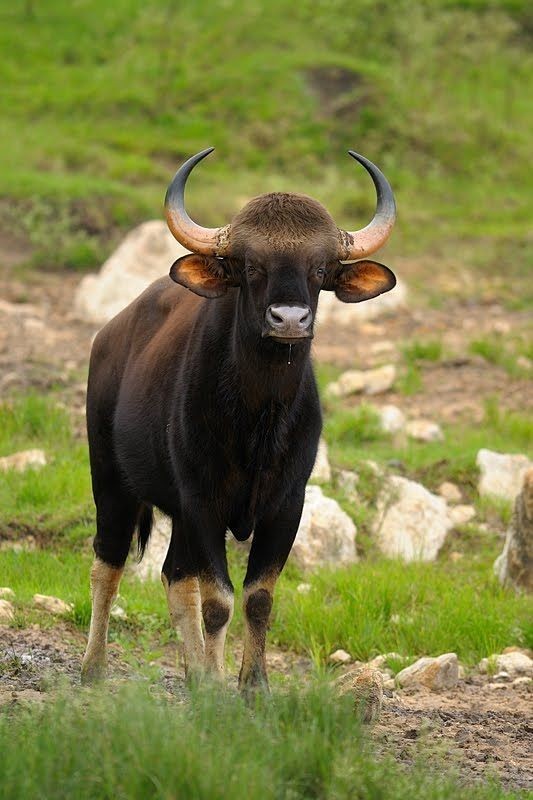
Chianina
The largest breed of cow in the world, and is also white which technically makes them closer to the canonical description of the wild kine of Araw than others mentioned. They are more docile than the others on this list, due to working closely with humans and being bred for farm work (pulling carts, ploughing etc)


This post (and maybe more like this in the future) was inspired by @outofangband 's amazing posts on the flora , fauna and general environments of Arda, please go check out their posts if you like this sort of thing.
#wild kine#kine of araw#tolkien#tolkien legendarium#the hobbit#hobbit#lotr#boromir#stewards of gondor#steward of gondor#Vorondil#vorondil the hunter#silmarillion#Boromir's horn#boromir son of denethor#wild white kine#oromë#araw#ecology of middle earth#world building#fauna of middle earth
21 notes
·
View notes
Text

What can we learn about land stewardship from The Lord of the Rings? Download the free article from Landscape Architecture Magazine on JSTOR and find out!
#the hobbit#lord of the rings#jrr tolkien#tolkien#elves#orcs#middle earth#bilbo baggins#research#landscape architecture#environmetalists#jstor#ecology#nature conservancy#conservation#lotr
285 notes
·
View notes
Text
wait, what the fuck do the Eagles in Middle Earth eat anyway? Like they are MASSIVE. What the heck does the Middle Earth food web look like? Or are you gonna tell me they don't eat and they're just magic? Because I will be grumpy with you.
5 notes
·
View notes
Text
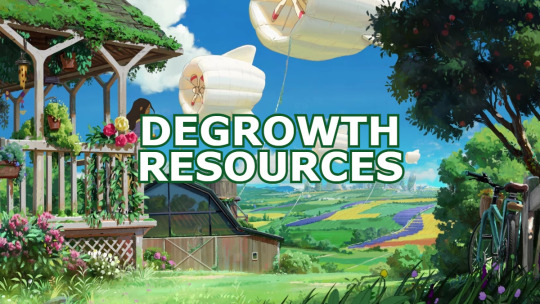
Degrowth basics
"The word degrowth stands for a family of political-economic approaches that, in the face of today’s accelerating planetary ecological crisis, reject unlimited, exponential economic growth as the definition of human progress."
What is Degrowth? | Caracol DSA
Why degrowth is the only responsible way forward | OpenDemocracy
Degrowth and MMT: A thought experiment
We Need A Fair Way To End Infinite Growth | Current Affairs
Degrowth: A Call for Radical Abundance | Common Dreams
Can degrowth save us and the planet? | Nottingham Trent
Defending limits is not Malthusian | Undisciplined Environments
Can We Have Prosperity Without Growth? | New Yorker
The Urgent Case for Shrinking the Economy | The New Republic
Giving Up on Economic Growth Could Make Us Cooler and Happier | The New Republic
A guide to degrowth: The movement prioritizing wellbeing in a bid to avoid climate cataclysm | CNBC
What is ‘degrowth’ and how can it fight climate change? | Popular Science
Enough for Everyone | Yes! Magazine
Toward a Post-Capitalist Future: On the Growth of “Degrowth” | Lit Hub
All we are saying is give degrowth a chance | The RSA
A pathway out of environmental collapse | newsroom
On Technology and Degrowth | Monthly Review
What is degrowth (and more importantly, what is it not)? | META
Green growth
"There is no empirical evidence that absolute decoupling from resource use can be achieved on a global scale against a background of continued economic growth."
Is Green Growth Possible? | Jason Hickel & Giorgos Kallis
The Myth of America’s Green Growth | Foreign Policy
The decoupling delusion: rethinking growth and sustainability | The Conversation
Is green growth happening? | Uneven Earth
Green Growth | Uneven Earth
The Delusion of Infinite Economic Growth | Scientific American
Degrowth is not austerity – it is actually just the opposite | Al Jazeera
A response to Paul Krugman: Growth is not as green as you might think | Timothée Parrique
Deceitful Decoupling: Misconceptions of a Persistent Myth | Alevgul H. Sorman
Degrowth isn’t the same as a recession – it’s an alternative to growing the economy forever | The Conversation
Degrowth and the left
"In the middle of an ecological emergency, should we be producing sport utility vehicles and mansions? Should we be diverting energy to support the obscene consumption and accumulation of the ruling class?"
The Left should embrace degrowth | New Internationalist
Ecosocialism is the Horizon, Degrowth is the Way | The Trouble
Degrowth: Socialism without Growth | Brave New Europe
Toward an Ecosocialist Degrowth: From the Materially Inevitable to the Socially Desirable | Monthly Review
For an Ecosocialist Degrowth | Monthly Review
Degrowth and Revolutionary Organizing | Rosa Luxemburg NYC
The necessity of ecosocialist degrowth | Rupture
Degrowth is Anti-Capitalist | Protean Mag
Degrowth Communism | PPPR (Part one | Part two | Part three)
Economic Planning and Degrowth: How Socialism Survives the 21st Century | New Socialist
Degrowth and the South
"Southern countries should be free to organize their resources and labor around meeting human needs rather than around servicing Northern growth."
Who is afraid of degrowth? A Global South economic perspective | IBON Foundation
The anti-colonial politics of degrowth | Jason Hickel
Unlearning: From Degrowth to Decolonization | Rosa Luxemburg NYC
Degrowth requires the Global South to default on its foreign debts | Resilience
Journals/Reports
Degrowth: a theory of radical abundance | Jason Hickel
A systematic review of the evidence on decoupling of GDP, resource use and GHG emissions, part II: synthesizing the insights
What does degrowth mean? A few points of clarification | Jason Hickel
Providing decent living with minimum energy: A global scenario | Global Environmental Change
Urgent need for post-growth climate mitigation scenarios | Nature Energy
Degrowth and critical agrarian studies | Julien-François Gerber
Decoupling debunked – Evidence and arguments against green growth as a sole strategy for sustainability | European Environmental Bureau
Incrementum ad Absurdum: Global Growth, Inequality and Poverty Eradication in a Carbon-Constrained World | David Woodward
Degrowth can work — here’s how science can help | Nature
A New Political Economy for a Healthy Planet | Jason Hickel
Planning beyond growth. The case for economic democracy within limits
Millionaire spending incompatible with 1.5 °C ambitions | Cleaner Production Letters
Is green growth happening? An empirical analysis of achieved versus Paris-compliant CO2–GDP decoupling in high-income countries | The Lancet
Books
Exploring Degrowth: A Critical Guide | Pluto Press
A People's Green New Deal | Max Ajl
Less is More: How Degrowth Will Save the World | Jason Hickel
Breaking Things at Work: The Luddites Are Right About Why You Hate Your Job | Verso Books
The Future is Degrowth: A Guide to a World Beyond Capitalism | Verso Books
The Imperial Mode of Living: Everyday Life and the Ecological Crisis of Capitalism | Verso Books
Marx in the Anthropocene: Towards the Idea of Degrowth Communism | Kohei Saito
Degrowth & Strategy: how to bring about social-ecological transformation
27 Essays and Thoughts on Degrowth | Giorgos Kallis
Videos
Yes To Limits To Growth! | The Other School
How Degrowth Can Save the World | Andrewism
How We End Consumerism | Our Changing Climate
Demystifying Degrowth | Rosa Luxemburg NYC
Degrowth is not Austerity | John the Duncan
Degrowth and Ecosocialism | Planet: Critical
Degrowth in 7 minutes: Fighting for climate by living better | Think That Through
The Future is Degrowth (w/ Aaron Vansintjan) || SRSLY WRONG
"Degrowth means power to the working class!"with Jason Hickel | GND Media
Others
degrowth.info
Degrowth Journal
Doughnut Economics

2K notes
·
View notes
Text
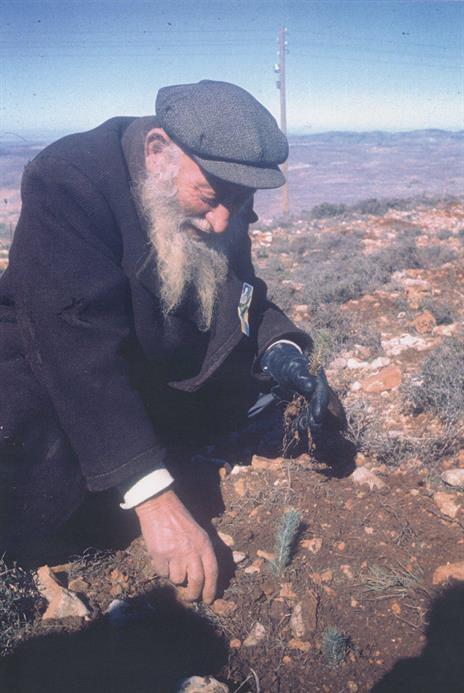
Immigrant from the USSR planting a tree on Tu B’shevat, Israel, 1970s
Tu B’shevat is often referred to as the new year (or “birthday”) of the trees. Fruit trees were awarded special status in the Torah because of their importance in sustaining life and as a symbol of God’s divine favor. As Tu B’shevat falls usually in February after mid-winter, the rabbis concluded that the majority of the annual rainfall has usually already fallen by this time, thus yielding a healthy, water-logged soil in which to plant new trees. The holiday fell out of practice after the destruction of the Second Temple, but was revived by kabbalists in the Middle Ages. They imbued it with mystical significance as well as created elaborate new symbolic rituals. For moderm environmentalists, Tu B'shevat is an ancient and authentic Jewish “Earth Day” that educates Jews about their tradition’s advocacy of responsible stewardship of God’s creation as manifested in ecological activism.
270 notes
·
View notes
Text
It is absolutely buckwild to me how many ppl will find my lotr liveblogging and stop to chat? and everyone has thought about and talked about these stories so much? A friend has informed me that Tolkien set up Middle Earth in-universe as an ancient history (possibly specifically of the British Isles?) that had been forgotten in the modern age. And then idk, it feels like to me that he wrote so many stories into his Middle Earth that it doesn’t matter that ppl did actually for-real mostly forget them. You might not know Weland or Deor or Pepin, you might not have heard Voluspa or The Wanderer or The Ruin or the Gylfaginning, but you don’t have to. I mean, I suggest it, sure, but he preserved stories inside a story, exactly the way you’re supposed to. Ecologically sound. And! And then, even better! Then people talk about it.
138 notes
·
View notes
Text
Just in case, some might enjoy. Had to organize some notes.
These are just some of the newer texts that had been promoted in the past few years at the online home of the American Association of Geographers. At: [https://www.aag.org/new-books-for-geographers/]
Tried to narrow down selections to focus on critical/radical geography; Indigenous, Black, anticolonial, oceanic/archipelagic, carceral, abolition, Latin American geographies; futures and place-making; colonial and imperial imaginaries; emotional ecologies and environmental perception; confinement, escape, mobility; housing/homelessness; literary and musical ecologies.
---
New stuff, early 2024:
A Caribbean Poetics of Spirit (Hannah Regis, University of the West Indies Press, 2024)
Constructing Worlds Otherwise: Societies in Movement and Anticolonial Paths in Latin America (Raúl Zibechi and translator George Ygarza Quispe, AK Press, 2024)
Fluid Geographies: Water, Science, and Settler Colonialism in New Mexico (K. Maria D. Lane, University of Chicago Press, 2024)
Hydrofeminist Thinking With Oceans: Political and Scholarly Possibilities (Tarara Shefer, Vivienne Bozalek, and Nike Romano, Routledge, 2024)
Making the Literary-Geographical World of Sherlock Holmes: The Game Is Afoot (David McLaughlin, University of Chicago Press, 2025)
Mapping Middle-earth: Environmental and Political Narratives in J. R. R. Tolkien’s Cartographies (Anahit Behrooz, Bloomsbury Publishing, 2024)
Midlife Geographies: Changing Lifecourses across Generations, Spaces and Time (Aija Lulle, Bristol University Press, 2024)
Society Despite the State: Reimagining Geographies of Order (Anthony Ince and Geronimo Barrera de la Torre, Pluto Press, 2024)
---
New stuff, 2023:
The Black Geographic: Praxis, Resistance, Futurity (Camilla Hawthorne and Jovan Scott Lewis, Duke University Press, 2023)
Activist Feminist Geographies (Edited by Kate Boyer, Latoya Eaves and Jennifer Fluri, Bristol University Press, 2023)
The Silences of Dispossession: Agrarian Change and Indigenous Politics in Argentina (Mercedes Biocca, Pluto Press, 2023)
The Sovereign Trickster: Death and Laughter in the Age of Dueterte (Vicente L. Rafael, Duke University Press, 2022)
Ottoman Passports: Security and Geographic Mobility, 1876-1908 (İlkay Yılmaz, Syracuse University Press, 2023)
The Practice of Collective Escape (Helen Traill, Bristol University Press, 2023)
Maps of Sorrow: Migration and Music in the Construction of Precolonial AfroAsia (Sumangala Damodaran and Ari Sitas, Columbia University Press, 2023)
---
New stuff, late 2022:
B.H. Roberts, Moral Geography, and the Making of a Modern Racist (Clyde R. Forsberg, Jr.and Phillip Gordon Mackintosh, Cambridge Scholars Publishing, 2022)
Environing Empire: Nature, Infrastructure and the Making of German Southwest Africa (Martin Kalb, Berghahn Books, 2022)
Sentient Ecologies: Xenophobic Imaginaries of Landscape (Edited by Alexandra Coțofană and Hikmet Kuran, Berghahn Books 2022)
Colonial Geography: Race and Space in German East Africa, 1884–1905 (Matthew Unangst, University of Toronto Press, 2022)
The Geographies of African American Short Fiction (Kenton Rambsy, University of Mississippi Press, 2022)
Knowing Manchuria: Environments, the Senses, and Natural Knowledge on an Asian Borderland (Ruth Rogaski, University of Chicago Press, 2022)
Punishing Places: The Geography of Mass Imprisonment (Jessica T. Simes, University of California Press, 2021)
---
New stuff, early 2022:
Belly of the Beast: The Politics of Anti-fatness as Anti-Blackness (Da’Shaun Harrison, 2021)
Coercive Geographies: Historicizing Mobility, Labor and Confinement (Edited by Johan Heinsen, Martin Bak Jørgensen, and Martin Ottovay Jørgensen, Haymarket Books, 2021)
Confederate Exodus: Social and Environmental Forces in the Migration of U.S. Southerners to Brazil (Alan Marcus, University of Nebraska Press, 2021)
Decolonial Feminisms, Power and Place (Palgrave, 2021)
Krakow: An Ecobiography (Edited by Adam Izdebski & Rafał Szmytka, University of Pittsburgh Press, 2021)
Open Hand, Closed Fist: Practices of Undocumented Organizing in a Hostile State (Kathryn Abrams, University of California Press, 2022)
Unsettling Utopia: The Making and Unmaking of French India (Jessica Namakkal, 2021)
---
New stuff, 2020 and 2021:
Mapping the Amazon: Literary Geography after the Rubber Boom (Amanda Smith, Liverpool University Press, 2021)
Geopolitics, Culture, and the Scientific Imaginary in Latin America (Edited by María del Pilar Blanco and Joanna Page, 2020)
Reconstructing public housing: Liverpool’s hidden history of collective alternatives (Matt Thompson, University of Liverpool Press, 2020)
The (Un)governable City: Productive Failure in the Making of Colonial Delhi, 1858–1911 (Raghav Kishore, 2020)
Multispecies Households in the Saian Mountains: Ecology at the Russia-Mongolia Border (Edited by Alex Oehler and Anna Varfolomeeva, 2020)
Urban Mountain Beings: History, Indigeneity, and Geographies of Time in Quito, Ecuador (Kathleen S. Fine-Dare, 2019)
City of Refuge: Slavery and Petit Marronage in the Great Dismal Swamp, 1763-1856 (Marcus P. Nevius, University of Georgia Press, 2020)
66 notes
·
View notes
Text
The Hanford nuclear site was established in 1943 as part of the Manhattan Project, and over the next four decades produced nearly two-thirds of the plutonium for the US’s nuclear weapons supply, including the bomb dropped on Nagasaki.
During its lifespan, hundreds of billions of gallons of liquid waste were dumped in underground storage tanks or simply straight into the ground. After the site’s nine nuclear reactors were shut down by 1987, about 56m gallons of radioactive waste were left behind in 177 large underground tanks – two of which are currently leaking – alongside a deeply scarred landscape.
In the decades since, the Yakama Nation has been one of four local Indigenous communities dedicated to the cleanup of this historic landscape. For the Yakama Nation, that has meant tireless environmental and cultural oversight, advocacy and outreach with the hope that one day the site will be restored to its natural state, opening the doors to a long-awaited, unencumbered homecoming.
Today, their outreach work has reached a fever pitch. There are few Yakama Nation elders still alive who remember the area before its transformation, and there are likely decades to go before cleanup is complete. So members are racing to pass on the site’s history to the next generation, in the hopes they can one day take over.
Yakama Nation history on the Hanford site dates back to pre-colonization, when people would spend the winter here fishing for sturgeon, salmon and lamprey in the Columbia River, as well as gathering and trading with other families. In 1855, the Nation ceded over 11m acres of land to the US, which included the Hanford area, and signed a treaty that relegated them to a reservation while allowing the right to continue fishing, hunting, and gathering roots and berries at “all usual and accustomed places”.
But in the 1940’s, the situation shifted dramatically when the area was cleared out to make room for the construction of nuclear reactors.
LaRena Sohappy, 83, vice-chairwoman for Yakama Nation General Council, whose father was a well-known medicine man, grew up in Wapato, about 40 miles from Hanford. She said she remembers the strawberry fields that lined the Hanford site, her family gathering Skolkol, a root and daily food, and traveling to the area for ceremonies.
Her cousin’s family who lived close to Hanford were woken in the middle of the night and forced to leave to make way for the nuclear site, she recalled
“They didn’t have time to pack up anything,” said Sohappy. “They just had to leave and they were never told why and how long they were going to be gone.”
The effort to give Indigenous people a voice in Hanford’s fate was forged in part by Russell Jim, a member of Yakama Nation’s council, whose work has been credited with helping to keep Hanford from becoming a permanent “deep geologic repository”, a place where high-level nuclear waste from this site and others across the country would be stored.
“From time immemorial we have known a special relationship with Mother Earth,” Jim, who died in 2018, said in a statement to the US Senate in 1980. “We have a religious and moral duty to help protect Mother Earth from acts which may be a detriment to generations of all mankind.”
Today, the ER/WM program, which was founded in the early 1980’s with Jim at the helm, includes such staff as a biologist, ecologist and archeologist. It’s funded by the US Department of Energy (DoE), which operates the Hanford site and leads the cleanup process under an agreement with the US Environmental Protection Agency (EPA) and the Washington state department of ecology.
The Yakama Nation program’s focus is on accelerating a thorough cleanup of the site, protecting culturally significant resources and assessing the threats to wildlife and water.
1K notes
·
View notes
Text
I really loved @gwaedhannen ‘s post about wanting more strangeness in First Age Beleriand and I had a post awhile back about potential strange ecology for Middle Earth so I wanted to revisit it with some more thoughts!
Following up to my speculative biology ideas for elves,
Like the last list, these are more jotting down ideas, please please feel free to give me any to elaborate on!
Mammoths on the Helcaraxë and other cold reaches. Tolkien talks of all creatures that walk or have ever walked the earth existing in Valinor and throughout Arda hence prehistoric and extinct species can also exist here. I do also headcanon smaller herds of woolly mammoths and woolly rhinos in northern Hithlum and north of greater Beleriand. Stellar’s sea cows in the frozen waters:(
Early cenozoic aquatic birds such as Hesperornis off the coasts of Balar and Alqualondë.
Enchanted orchards of Valinor; large, seemingly abandoned self containing gardens and orchards. There are fruit tree orchards hidden behind ivy covered walls; some always filled with Autumn breezes, citrus groves always kept warm and bright lined with lemon trees and deep green grass. Except for the Maia who tend them, the only beings who enter the orchards are elves who do so, usually by mistake.
There are places throughout Arda where the Music was not well, loud, enough. They can be the size of a footstep or a field and are not fully connected to the space time continuum. Those who tread on them will end up elsewhere in time or space and will never realize what had happened.
In the great expanses of unexplored Valinor, there are coves, glens, lagoons, and all sorts of other places that seem shift and change, being there one day and not the next. Even while walking through familiar, charted territory, there is always the possibility of ending up in a hidden clearing, covered in hanging mosses and with strange lights all around.
The forests of Beleriand are full of strange, sometimes dark creatures that have never been properly documented. They are the strange hybrids of Yavanna’s creations and Melkor’s corruption and a few have escaped the eyes of even the Ainur.
The underground lakes of Middle Earth, especially around Angband contain blind, hungry beings, nourished by the volcanic soils. Strange fungi and lichen stick to the walls of the caverns and passageways beneath the fortress.
There are hot springs in several locations in Beleriand South of the Ered Wethrin (there are many in the Ered Wethrin of course but these are not exactly relaxation destinations). Namely in Himring, throughout Hithlum, north of Barad Eithel, parts of Dorthonion, in the caves of Androth, and parts of the Ered Luin. Not all of these are used by residents and not all maintain safe temperatures or conditions but some do! In many parts of Northern Beleriand, they're used for bathing and communal relaxation. There are other springs throughout the March of Maedhros and I like the idea of Himring being built around a hot spring. There are hot and warm springs in both Nargothrond and Menengroth. The definition of warm springs differs from hot springs only in average temperature
The caves of Menengroth and Nargothrond allow elves and others access to the strange wonders of the underground world of Middle Earth. They are lit by lanterns and by certain bioluminescent plants. There are windows in key areas that allow sunlight to filter into some of the larger halls and though there are small gardens of species that do not require direct sunlight, some are stationed in the areas where sunlight filters in. A small tributary of the river Narog flows directly through one of the great halls of Nargothrond. Its flora and fauna remain untouched by the elves and algae and aquatic plants as well as small fish, salamanders in their early stages, and stranger creatures are visible to see for those who walk along it.
In realms with Ainur or certain Eldar rule, natural life may not follow typical laws. Melian has great influence over the biodiversity and climate of Doriath for example even without meaning to.
The horror potential of the boundaries of the girdle or of Nan Elmoth. Time and space distorting, the forest becoming a maze, bird calls confusing and disorienting unwary or unlucky travelers
The Ered Gorgoroth, the eerie, mysterious mountain range, bordered to the north by Dorthonion and to the south by Nan Dungortheb. It was said the spawn of Ungolian haunted these mountains and the valley. I have some more posts on this but I've always imagined there being many pools and meres in Ered Gorgoroth, many harmless though frigid and some completely corrupted by the powers of Ungoliants spawn and other beings. Unfortunately, it’s not always possible to know which was which until it was too late.
Chemical reactions causing glimmering or colorful water. Elves learn carefully when this has occurred due to natural phenomena and when it is the result of unnatural influence or Ainur presence.
Salt lakes and landlocked waters mimicking ocean conditions. I’ve always imagined there being a lake like lake Baikal in the March of Maedhros
More Bioluminescence
The realms draped in dragon reek especially around Nargothrond. The pools of Ivrin are ruined by Glaurung and they are the source of the river Narog, the largest tributary to Sirion. The entire land could be poisoned. I imagine that plants wither or lose color, birds and frogs stay silent, animals are thrown off of their natural cycles, The orchards in the hills barren or producing foul fruit, strange happenings resulting from drinking from the river Narog or even eating animals that drank from it…
Alternatively the effects of the water where the power of Ulmo is still strong such as in Nan Tathren or the Twilit Meres
#the silmarillion#beleriand#musing and meta#Valinor#Doriath#ered gorgoroth#I hope these are ok I’m very tired
89 notes
·
View notes
Text
"Ancient World Fantasy" Reading List
(A little context to start. If you just want book recs, scroll on down to the first image.)
As I’ve been getting into RuneQuest (Wikipedia link), one striking component of the culture and community surrounding the game is that they’re very into the lore of its fictional world, Glorantha. I’m saying this as a comparison to a game like D&D, where the game is spread across tons of settings with no real sense of obligation to keep things in line with earlier editions.
Glorantha’s canon and worldbuilding has been going on since it was published in 1978 without, as far as I can tell, any big reboots. Which means that, unlike D&D, where people are bringing in all kinds of influences and doing direct adaptions of Jane Austen books and whatever, the RuneQuest game remains pretty tightly tied to the original setting. (There have been some exceptions. But not many!)
But since I run games for people who have ADHD or aren’t interested in studying up, I’ve been looking at all kinds of inspiration to drop into the game. Here are 20 novels that are roughly “ancient world” or “Bronze Age” like RuneQuest and deal with people interacting with strange gods, tight communities, and a world without fast overland travel or transferal of information.
I’m presenting them alphabetically by author’s last name.
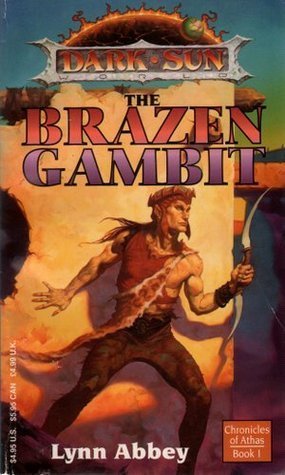

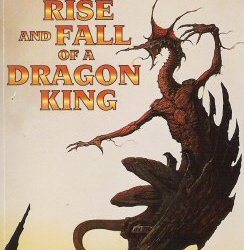
The Brazen Gambit, Cinnabar Shadows, The Rise and Fall of a Dragon King by Lynn Abbey
I'm sorry for starting this post off with licensed RPG novels, but these are good! And I don't mean "good for licensed RPG novels." I've read tons of them, and most are so bad! But these are actually fun. Good character development in a sword-and-sorcery world. It's also an ecological apocalypse world, with godlike beings oppressing common folks, leading to a lack of technological advancement and knowledge of the past.
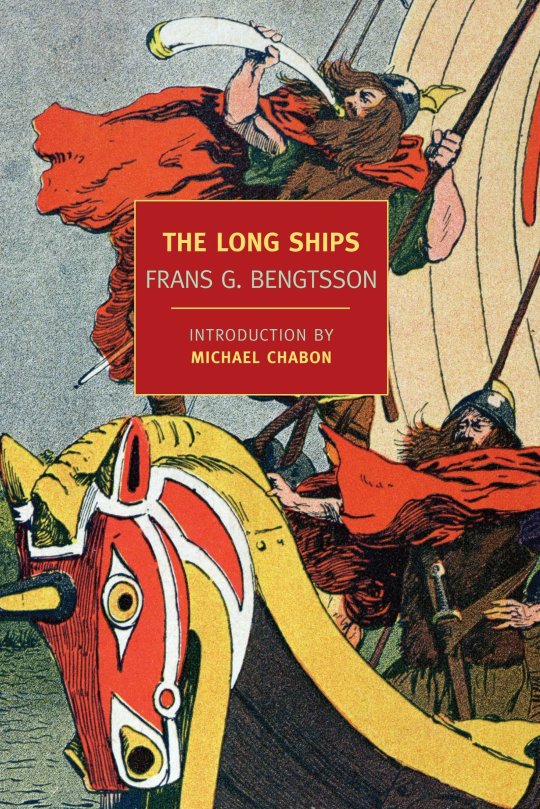
The Long Ships by Frans G. Bentsson
Written in the 1940s as a series of novellas, these stories take you on a tour of the Viking-era world, from Europe to the Middle East and beyond. Like a bunch of books on this list, this places them post-Bronze Age, so they're not officially "ancient world." But it gives a big spread of cultures, from the more clan-based Vikings to the bustling metropolises of Turkey. And it doesn't place any of them on any kind of linear advancement scale or whatever other gross way people "rate" cultures.
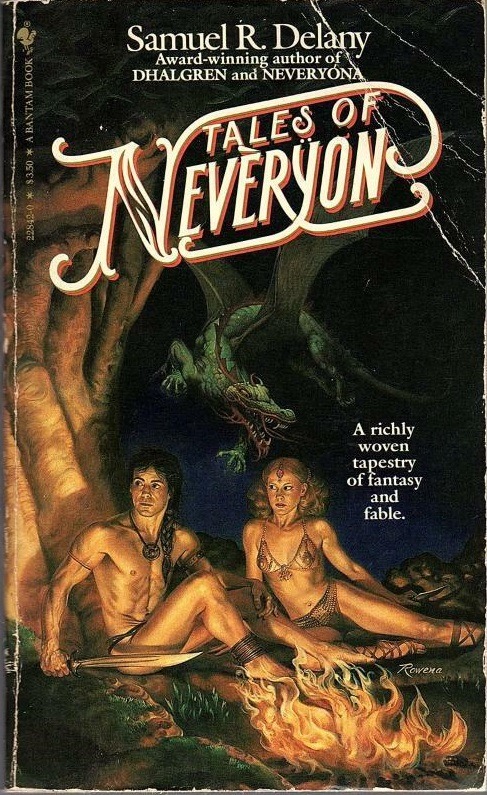

Tales of Nevèrÿon and Neveryóna by Samuel R. Delany
The master of weird sci-fi and gay historical novels, Chip Delany also wrote a fantasy epic. And it rules! Set on pre-historical(ish) Earth, these books describe the stories that maybe inform the myths we tell today? Dragons and slave revolts! A sort of "What if Game of Thrones was good?" series. Lots of good stuff about how people learn and how understanding expands.
I'm not listing the third book only because it's also a historical look at New York during the AIDS epidemic. It's an amazing book! But it strays from the "ancient world" aesthetic.
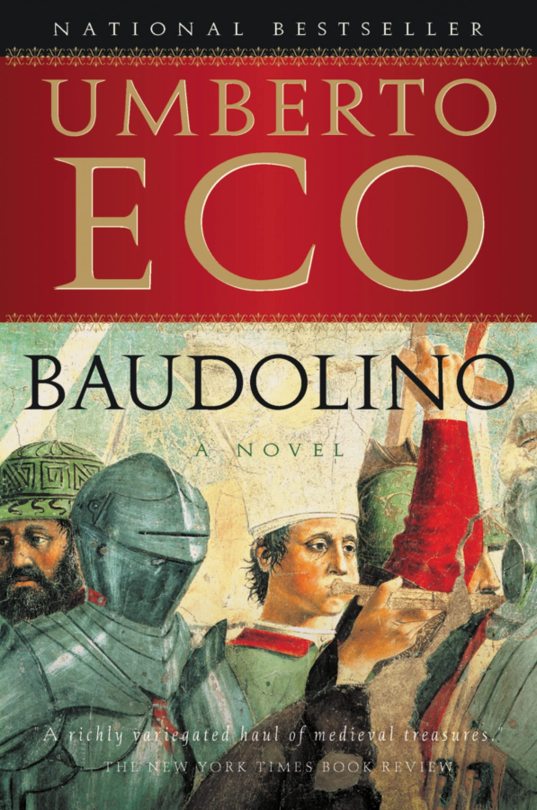
Baudolino by Umberto Eco
Another novel expressly set after the Bronze Age (this one starts in the 12th century). BUT it's about Medieval people's interaction with the knowledge they inherited from the past, specifically the myth of Prester John and the works of Herodotus.
I think I keep putting books like this on the list because roleplaying in a fantastical ancient world is not too far off from how Medieval people might have worshipped and referenced works from ancient Rome and non-European places.
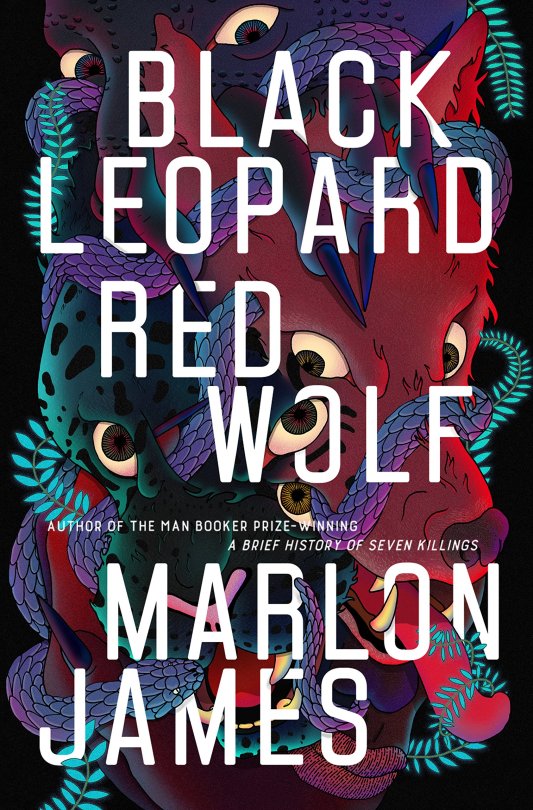
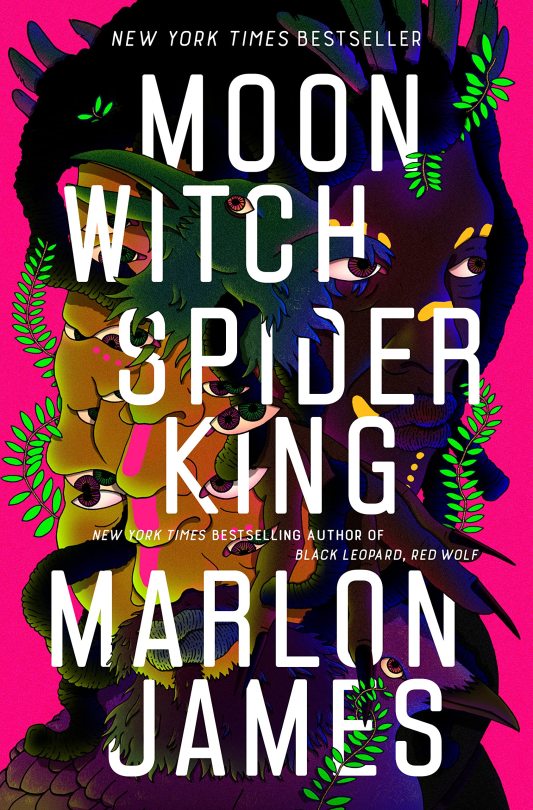
Black Leopard, Red Wolf and Moon Witch, Spider King by Marlon James
One of our best living writers! These are fantasy novels expressly set in a fantastical version of ancient/Medieval Africa. The books explore the same events from multiple points of view and are full of cool magic, awesome spirit combat, and a vast number of places and cultures that actively deconstructs most games's portrayal of fantasy Africa as a homogeneous place.
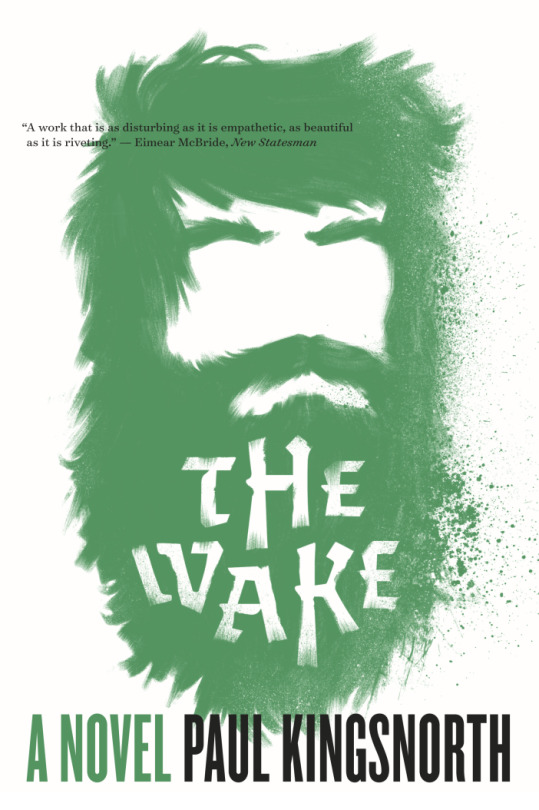
The Wake by Paul Kingsnorth
I think Kingsnorth has been outted as a sort of eco-fascist? I totally believe it, so feel free to skip this one. It's a historical novel set in England in 1066, as the Normans invade from France. It's written in a faux Middle English language and focuses on the lower classes and how they try to resist the invasion. A good reminder that "Medieval culture" (and especially the Renaissance as a time that "culture advanced") is often based on certain classes of society, such as rich people and/or men.
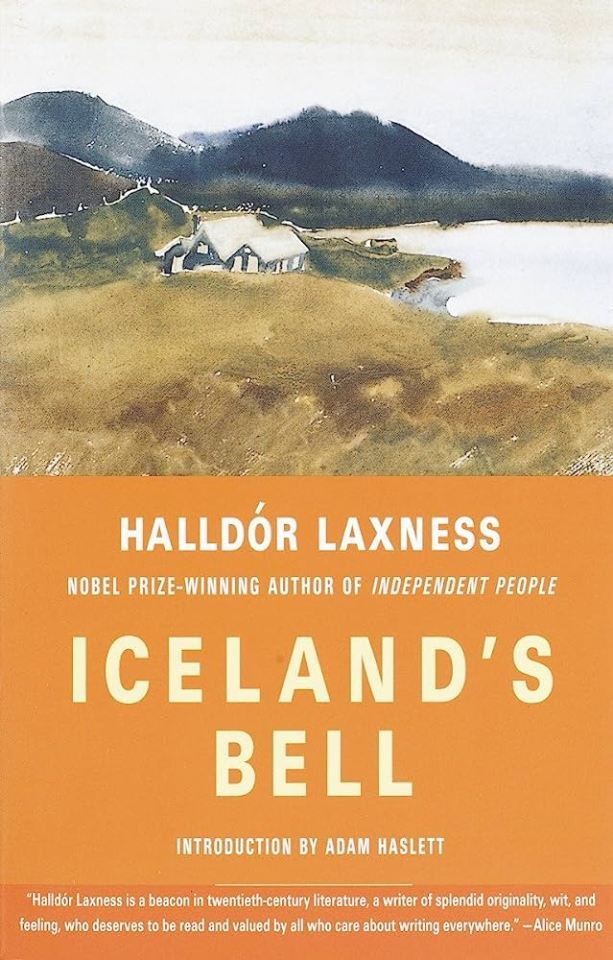
Iceland's Bell by Halldór Laxness
Speaking of how class intersects with technological advancement, this book is set in the 18th century, but it focuses on Iceland at a time when it was ruled by Denmark, and the lower classes there were under an enforced poverty. It's a book about how a rich Icelander was trying to recover the stories of his people in order to create a sense of national identity and resistance. But it's also a story about how a destitute man acts like a total weirdo when he's not allowed to fish in his own waters and is cut off from understanding his place in history.
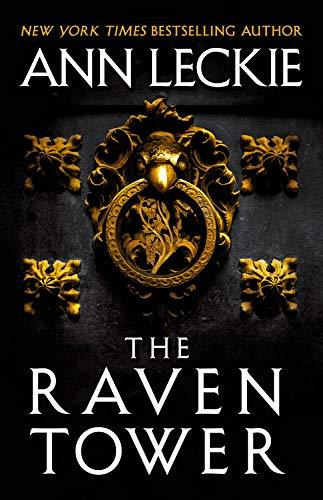
The Raven Tower by Anne Leckie
A big part of RuneQuest is people interacting with and enacting their gods. That's what this book is about! And it's about the strange vertigo that comes to people when they try to interact with the impossible timelines that gods exist on. Very good stuff.
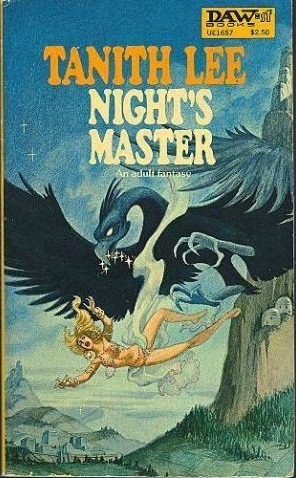
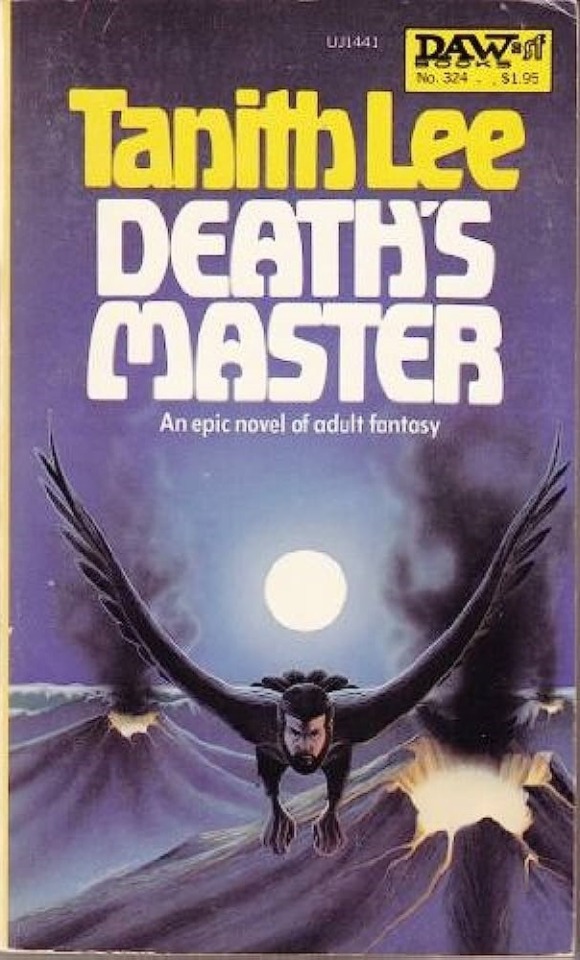
Night's Master and Death's Master by Tanith Lee
Ostensibly set on Earth back when it was flat and demons roamed the world, which is basically RuneQuest. Sort of like a series of hornier, gay bibles? With lots of gender fuckery, fun sex, and cool monsters.
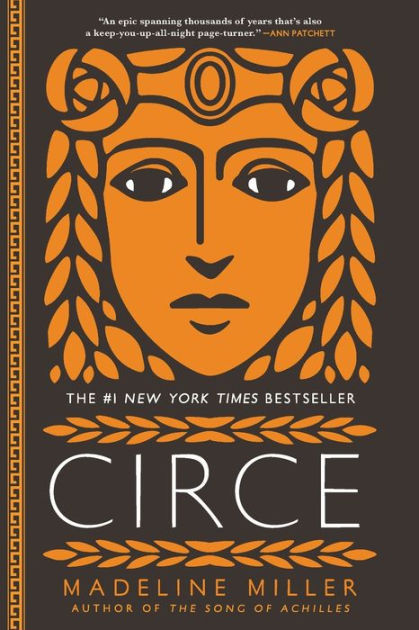
Circe by Madeline Miller
The story of the witch from The Odyssey, told from her point of view. Beautiful prose, tragic and beautiful characters, and a great share of mythical strangeness. Perfect if you want to learn how to run NPCs that are adversaries without being shallowly evil.

Ronia, the Robber's Daughter by Astrid Lindgren
Semi-Medieval again, but low class and vague enough that it could exist throughout ancient history. The daughter of a robber grows up in a tower full of robbers and generally has a wonderful time. Lots of weird monsters live in the woods, and there's a great starcrossed romance with someone from a rival robber gang. Perfect inspiration if you're running some cattle-raiding runs in RuneQuest; this is how to make robbers fun and sympathetic.
Read the book, watch the 1984 Swedish movie (which includes a great comedic scene of full-frontal dudity), and then watch the Studio Ghibli series.


A Stranger in Olondria and The Winged Histories by Sofia Samatar
Set in a world of pepper farmers and religious fanatics who worship a mysterious inscribed stone, these books do a great job of showing how people might interact with religion, rival cults, and mystery rites. It also portrays literacy and learning to read in places where it's gated behind social gatekeeping. And once again, the prose is beautiful.
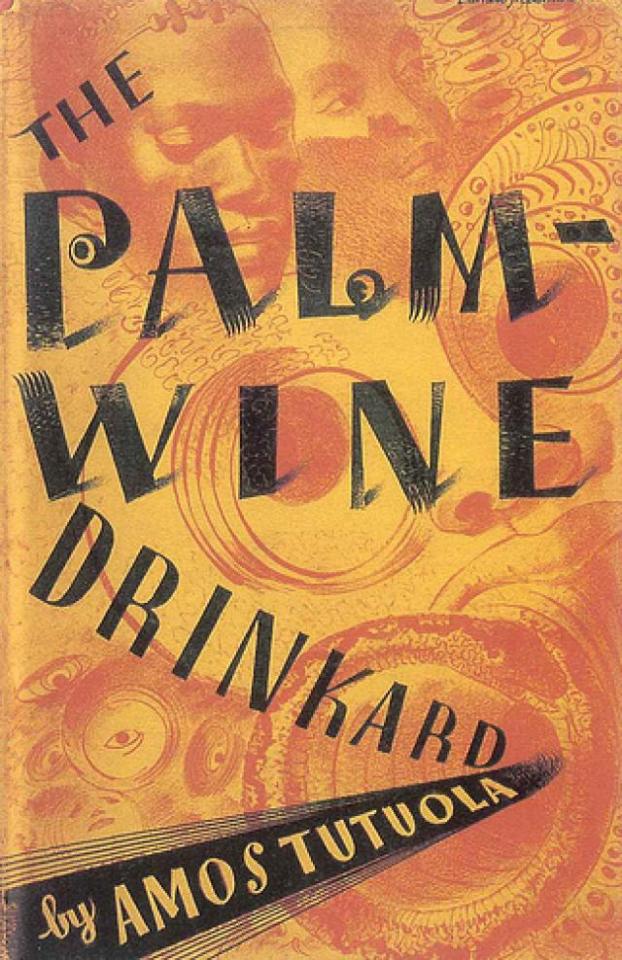
The Palm-Wine Drinkard by Amos Tutuola
The first African novel published in English outside of Africa, The Palm-Wine Drinkard is a funny, hallucinogenic story about getting drunk, stumbling through weird landscapes, and encountering fantastical spirits and people.
Tutuola also wrote My Life in the Bush of Ghosts, the inspiration for the famous(?) David Byrne/Brian Eno album. I haven't read it yet, but I'm keeping an eye out!
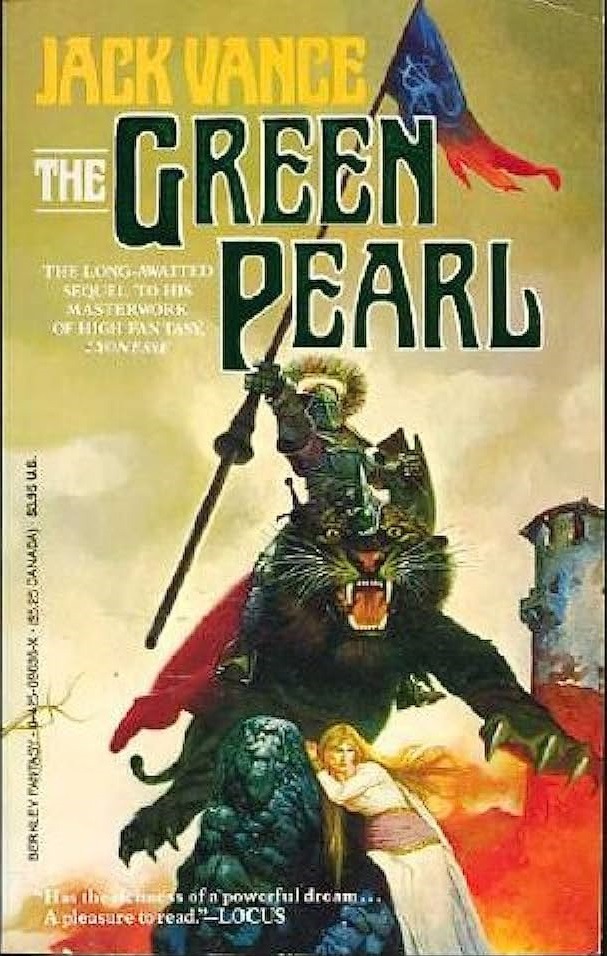
The Green Pearl by Jack Vance
This is a sequel to Lyonesse, which I haven't read because I love staring in the middle of things. Set around a mythical British Isles when Atlantis was still above the sea and part of the group of islands. Some great wizard shit, warring clans, romance, and a wizard whose name is fucking Shimrod (in case you need more convincing).
Those are my 20 novel recommendations! I'm gonna come back to add some nonfiction, comics, and myth resources for running games in fantastical ancient worlds. You can read SpeedRune, my ancient fantasy game, here.
213 notes
·
View notes
Text
working on a story/game/thing set in the 1990s, it's about the world changing and and the age of magic beginning. time is going to progress narratively only and I want the ending to take place on New Years to fit into the things are changing vibe.
The story is going to be playful but take itself seriously enough, think like Adventure Time or SLARPG in terms of tone, at least at this point in concept and development.
I'm thinking it'll either take place in '99 for the big heavy theming of entering the new millennium as the world changes forever.
Or
Somewhere earlier where the actual year turnover won't ultimately matter beyond the imagery of a new year beginning by the end of the story.
No show results option or suggest your own, though if you choose the second option and have a specific year in mind I'm very willing to listen, do give reasons if you suggest a specific year. Hell feel free to give reasons if you chose '99 too.
If you want more deets hit the read more.

So you wanna know more about this idea huh?
Well I was playing Tunic not long after Lenna's Inception and the Anodyne games and thought, hey I'd really love to make my own Zelda game too.
The idea is that 12,000ish years ago magic was discovered to be a thing by humanity, around this time a dragon appeared and warned that magic would doom the world. The magic users refused to listen and so a fight broke out, the dragon killed them all.
With the magic users all dead the dragon sealed earth in an anti-magic bubble and requested that their followers kill them to truly end all magic on earth, in their final moments they cast a spell with what magic is left inside the bubble to ensure they reincarnate if magic ever returns and can influence their new incarnation to destroy magic once again.
skip forward to the 1990s, after the industrial revolution caused untold amounts of ecological damage the anti-magic bubble is damaged along with all the horrors we know to have happened in reality.
At some point a corporation happens to find the truth, that magic exists and that a dragon is central to how it will alter our world. So they use it in several projects and build dragons to guard the locations these projects are taking place in. These locations then transform into dungeons.
Our hero finally enters the picture, Connie, a young woman who's just been doing whatever with her life, after investigating a rumor about monsters at a construction site she finds herself guided by a voice to take up a sword and fight the immitation dragons so she can achieve her true power, take on the form of a dragon herself, and save the world from the threat of magic.
Connie decides however after an accident at the first dungeon that maybe the world will be better off with magic as long as it's not solely in the hands of greedy rich bastards.
There's a lot more I have figured out but I think this is enough to get an idea for the poll. I am happy to blather more about the setting and Connie herself, her friends eventually too once I have them figured out. Feel free to send me asks about this. I'm prolly gonna make a sideblog for this at some point. Ideally once I have an idea if I can reasonably make a videos game or not lol.

#6aaah#OC: Connie#Zelda's zelda game#that's the tag I'm gonna use for this until I figure out an actual title cos I think it's funny lol
109 notes
·
View notes
Text
Developing Local Cultus: A Companion Library
In preparation for the revamping of my Local Cultus series over on wordpress, I have begun to gather this small reference library for anyone who may be interested. Containing mostly works which inspired me to set out on the path of developing a localized religious practice, as well as some of my research materials. For those interested in the series, and the topic which it covers, I absolutely recommend giving these titles a flip through.
The first of this series, an introduction and mapping out of what is to come, will be up on the Barn Cultus website by the end of July.
Braiding Sweetgrass by Robin Wall Kimmerer
Indispensable knowledge of ecological relationships as written by an indigenous woman and professor of environmental biology.
The Green Mysteries by Daniel Schulke
An encyclopedia of the spiritual, magical, and folkloric qualities of plants. Written by the Magister of the Sabbatic tradition.
The Golden Bough by James George Frazer
Frazer tracks the role of religion and magic up until the modern day, introducing along the way some of the key ideas behind my style of cultus developing (such as re-enchantment). This book is always on my reference shelf, close at hand, and while the anthropology is at times laughably outdated, it is a beautiful read with some interesting groundwork.
Viridarium Umbris by Daniel Schulke
I'd be remiss to not include this in my list. Another Schulke work and a comprehensive grimoire of verdant magics. I personally view this book as overhyped, though a should-read, perhaps not a must.
Demons & Spirits of the Land: Ancestral Lore and Practices
A foundational text of folkloric land spirits and the operations used by Pre-Modern Europe to interact with them.
Roman Cult Images: The Lives and Worship of Idols from the Iron Age to Late Antiquity
In my own eyes, the finding of localized images. Images references the faces, attributes, and fauna of the region in which each divinity of the cultus is depicted. The crafting of cult images, in the forms of eikons and idols, is another aspect of this.
Idolatry Restor'd by Daniel Schulke
Schulke speaks to the ensouled fetish, which connects greatly to the idea of the Living Statue and the cultic image. More of a sorcerous read, but worth it nontheless.
We Are In The Middle of Forever: Indigenous Voices of Turtle Island on the Changing Earth
I hold the strong conviction that those of us in America who find our bloodlines here through the powers of colonialism absolutely must be listening to indigenous wisdom- full stop. Publications like this one are a huge boon to the mending of the rift between the descendants of colonialism and the land which they inhabit. I think this becomes doubly important to those practices land-based religions.
The Sacred and the Profane by Mircea Eliade
I come with the bias of studying the anthropology of religion full time. This book has in many ways aided in bridging the gap between my academic studies and the building of my theologies, and is a profound read by an author with a storied collection of publications within the field.
Mystai: Dancing out the Mysteries of Dionysus
An interesting look into the mystery cult of Dionysus during late antiquity. Mystery cults often operated regionally and with localized aspects to their mysteries.
Eleusinian Mysteries and Rites by Dudley Wright
All literature on the Eleusinian mysteries is a boon- this is my recommendation. Following the ritual life of the local agriculture cult which has gone down in history as one of the largest surviving cults into the Christianization of Greece.
Walking the Worlds: Building Regional Cultus
Less of an academic read than the others on this list, but one I found equally as inspiring. The articles speak to diaspora and tensions of modern polytheism, and I think without some kind of academic pre-knowledge of these topics the articles themselves would fall a little flat, but a worthy read for the genuine pursuant.
Mystery Cults in the Greek and Roman World by the MET
Kongo in Haiti: A New Approach to Religious Syncretism
by Luc de Heusch
This article explores religious syncretism through the lens of Vodou, an African traditional religion known for its syncretic relationship with Christianity here in the US and Haiti. De Heusch explores a little bit of the roots in West Africa, and how the religion operates in both syncretic and nonsyncretic ways across the African diaspora.
Why Cecropian Minerva?: Hellenic Syncretism as System
by Luther H. Martin
This article explores syncretism in a western context, from the other side of the isle. This is not syncretism brought on by oppression and colonialism, instead highlighting syncretism theologically proposed by the oppressors, a favorite of the Romans. Martin explores the theology of this, the politics of this, and offers interesting analysis of the historical evidence.
Epithets in the Orphic Hymns by W. K. C. Guthrie
There's powers in names. You know it, I know it, Guthrie certainly knows it. Behind that power is meaning. While Guthrie does not particularly touch on regionalized epithets, I still find this to a be a great read to get one thinking about cult specific poetic titles.
101 notes
·
View notes
Text
Te Hōkioi, and Speculation on the Dietary Habits of the Great Eagles
He Hōkioi, i runga, he Hōkioi, i runga, hū.
(The great eagle, from above, made a booming call)
Kei te āputa koe, nā, o te rangi, e noho ana,
(In the open space, there, in the sky, it dwells)
Te hoa moenga, nō whatitiri mātakataka;
(Death's companion, with crashing thunder)
Hei aha, tērā, e tararua mārire, ona hikumaro?
(Why, then, do its tail feathers no longer split the quiet in two?)
Rua maro tonu, ona hakikau;
(Two fathoms wide, its wings;)
E huhū nei, i runga te rangi,
(It called, above in the sky)
Hōkioi, Hōkioi.
(The sound: hōkioi, hōkioi.)
- poem/chant by the great Ngāti Toa chief Te Rauparaha
For @tolkienofcolourweek, I'm spending seven days bringing Māoritanga and mātauranga Māori to the world of Tolkien! Starting off on day 1 with: what did Manwë's Eagles eat?
Such massive animals, especially flying ones, would have required a huge caloric intake. We have little evidence about what potential prey may have existed in Beleriand and Middle Earth. The Hobbit mentions them eating sheep, and it seems likely that they would hunt other large animals, such as deer or bison. But there's nothing in our modern world that compares to or fills an ecological niche like Manwë's Eagles.
This is where I draw on Māori oral history of the largest eagles to ever live.
In English they're called Haast's Eagles, but in Māori there are several names. Probably the most well-known of the Māori names is pouakai/poukai, but my people called them hōkioi.
They were massive, weighing as much as 17.8 kg (about 39 lbs) and with wingspans as large as 3 metres (about 10ft). Their feet and claws were the size of modern day tigers, capable of punching through bone. They hunted prey more than fifteen times their own size.
(Granted, the eagles of Manwë are much larger than even the hōkioi! Still, it's similar enough for me to draw inspiration.)


[Left image: an artist's rendition of a hōkioi perched on a rock. Right image: an artist's rendition of a hōkioi attacking the neck of a giant flightless bird.]
The hōkioi's primary prey was the moa, large flightless birds similar to ostriches or emus. With no large land mammals on the islands, hōkioi were the apex predators.
Then, circa 900 CE, large mammals came to Aotearoa for the first time. They also preyed on moa, reducing the hōkioi's food supply. So perhaps it was natural that the hōkioi began to hunt these mammals as new prey.
Unfortunately, those mammals were us.


[Left image: an artist's rendition of a hōkioi attacking a Māori man who holds a spear. Right image: an artist's rendition of a child running from a hōkioi.]
Our stories of the hōkioi, or pouakai, tell of giant birds that could swoop down from the sky to kill and eat even strong warriors. They were also known to carry off small children.
I'm not saying that the eagles of Manwë ate elves or humans. (I think they were probably given firm instructions not to!) It would make sense for them to prey on orcs and other creatures of Morgoth, though. And there's one other group who we know were hunted like animals in Beleriand, due to... misunderstandings. A group who the Eagles may not have initially recognized as sentient creatures. A group who would have been an ideal size to pick up and carry off as a snack.
I'm just saying, I think there may have been multiple reasons that dwarves chose to live underground.
-
(Sources for further information about te hōkioi:
The man-killer that fell from the sky
NZ Birds: Haast's Eagle)
#silmarillion#silm meta#the giant eagles#tocweek2023#māori-fying tolkien#mine#yes this is a little bit cracky#i fully acknowledge that#so please don't be weird in my notes and inbox#(also i SWEAR i haven't forgotten about my wips and i promise i'm working on them!)
79 notes
·
View notes
Text
From the tropics to the far north, fungi in the soil seem to directly determine the number and types of trees that can thrive in a given area, said Jonathan Myers, an associate professor of biology whose work at Tyson contributed to the global findings. The study was published in Communications Biology.
Many trees depend on a special partnership with mycorrhizal fungi that grow around their roots. The fungi provide the tree with nitrogen, phosphorus and other nutrients, and the tree gives the fungi carbon in the form of sugar and lipids for energy. "It's a mutually beneficial arrangement," Myers said.
The results from this study suggest that fungi are more than casual acquaintances with their tree companions: the fungi drive diversity—or lack thereof.
Specifically, the underground back-and-forth helps explain why tropical forests can support multiple species of trees in a small area, why forests in the far north and south are often dominated by just a few species, and why the oak and hickory forests at Tyson fall near the middle of the diversity spectrum. "The study really zeroed in on one of the basic patterns in ecology, which is that forests become more diverse the closer you get to the equator," Myers said.
71 notes
·
View notes
Note
There's been a trend, around for a long time, that I think started in sci-fi and bled over into fantasy that I always found curious: 'Humanity, Fuck Yeah!'. It's not just that humans are special or unique, it's where a setting and the strange elements of it are diametrically opposed to the familiar perspective of humanity. That the world of magic and creatures (or with sci-fi, aliens and stars), is always in some manner of conflict with the human world, and so the story showcases humans triumphantly overcoming this strange unknown. It's not always portrayed in such a conquest/exploration mindset; sometimes it's Warhammer, others it's Pacific Rim, other times its Star Trek and elsewhere its Starship Troopers. Do you see any elements of this 'Onward, Humanity!' in Tolkien's works? I know he ends the timeline with the fading of magic and elves and all that, but this can be interpreted tragically pretty easily. Like, on a scale of 1 (Humans Are The Worst of All) to 7 (Humans Are The Best of All), where would Tolkien's world overall land?
That's a very good question actually let me think about it 🤔
Instinctually what I want to say is Tolkien has 'humanity, oh no' more than anything else. Lotr in general contains a mirriad of colonialist/conquest/exploration type aspects, but the sense of human positivity is decidedly lacking. Humanity also does not really 'win' against magic, nor is 'magic' or 'the unknown wilds of the world' actually what they are fighting against. They're fighting against satan and heresy and it's heresy within humans that is what is ultimately damaging the world around them. Again, very catholic. Humans are also in no way special or unique, unless it's in how easily they are corrupted by heresy.
In fact humanity in middle earth reached it's own peak during a time of far greater contact with elves and magic etc (but elves and magic are holy so it's really more about having greater contact with divinity). Humans are aided by elves and other magical creatures, and it is their lessening of contact with them that spells their '''decline''' (apparently, if tolkien says so I guess)
So no, I'd say whilst Tolkien himself was very enamoured with the idea of sailing off to some new pristine world and 'taming' it (song of hiawatha was a favourite of his apparently) within lotr 'onwards humanity' does not really suit. In fact I'd say it's more like 'ugh humans, I guess we are also humans and therefore we should be alright in the end but what if humanity is a disease?' Lotr has massive amounts of that kind of eco-activism that's highly lauding of the 'natural state of things' (a state that does not exist really) and honestly I think the books have done quite a bit of damage to people's perceptions of what sustainable living and ecological progress should look like. So, essentially the opposite of 'onwards humanity' but equally problematic.
17 notes
·
View notes
Note
your tolkien edits are always so lovely, do you have graphics editors that inspire you?
hey anon.. would you perhaps want to join me in a small and tumbledown cliff-side castle by the shining sea within whose shelter we can spend the rest of our days. circle yes or no
anyways!! tumblr is the school of athens and i am but a humble student sitting at the feet of greater talents, so here are a few of my biggest editing inspirations for your happy perusal:
@himemiyaaah / @tarninausta - probably my original editing inspiration back when i took my first waddling steps into making graphics myself! rosie just has such an amazing command of color, style, balance, etc.. her edits are so beautiful and harmonious, and i love her expressive use of text.
@miriel-therindes - also someone i discovered early on! i swear there isn't a form lyndeth hasn't tried her hand at and succeeded with in high style. her incredible sense and editing of colors and creative typography are just !!!
@arwenindomiel /@edwinas - the enormously talented mastermind behind tolkien south asian week! her edits are striking and have a real cinematic feel with bold, gorgeously cohesive color palettes (her dramatic shadows are spectacular) as well as innovative use of text and other graphic elements that just tie it all together each time.
@emyn-arnens - save me atlas of arda series atlas of arda series save me !! whenever i need inspiration on how to make dynamic edits that don't include people, i go to this master of her craft. her colors mesh so well together, her formatting is creative and refreshing, and her photo choices are on point. whence does her power flow.
@aredhels - so elegant and sleek! sari is so good at using all the parts of her edits to evoke the desired mood--for lack of a better word, everything she makes is just so aesthetic. i love her understated, low-text style and how she can make incredibly compelling edits just with her impeccable image choices and color editing. and besides all that she singlehandedly gave me the confidence to experiment with the eight-image picspam format yayay
@tilions - legendary user of non-text elements! i honestly have no idea how emily comes out with some of the image layering that they do. her edits feel professional-grade (hoping tentatively that this is a comparison that makes sense but who knows). she makes such bold color choices! it's easy to be scared off by bright palettes but apparently emily is immune to aesthetic fear. she also concocts these amazing silhouette edits that are like those 70s nasa posters and it's. so cool.
@russingon - i want to imbibe mayim's delicious color palettes into myself for real. something about them is so distinctive and pleasing! how much punch he can pack into a two-image edit never ceases to astound. i'm especially fond of their family/house edits (i love seeing their great faceclaim choices all together)!
@brighter-arda - toi is so endlessly committed to making the tolkien fandom a more diverse, inclusive, and accepting space, and i really admire all the work she puts in to uplift other creators. her own edits have really interesting and creative themes and formatting, and it's wonderful how she always incorporates meaningful elements of the character's culture.
@someoneinthestars - their use of darker colors is so evocative, and i love their latine tolkien series! they often align text to elements within the image, which takes such precision (i've only done it once, i think!), but when they do it it always comes out gorgeously.. awuagh.
@outofangband - the attention and research nelyo puts into their environmental edits could power three mid-size cities and i have nothing but respect for them and their dedication. honestly i think they know more about the ecology of middle earth than tolkien himself did when he made it (and he also never made edits about it, so another point to nelyo)!
anyways, this is only a cross-section of the plethora of amazing and talented people i get to share this community with, but i hope it was what you were looking for anon! many many thanks for giving me the ever-welcomed opportunity to kvell a little over some of my favorite creators, and as always, many many thanks to those creators themselves for sharing their spectacular works ♡♡♡
#i hope you have a safe + happy day anon :]#call and response#the professor's world#btw if any of you would like to not be tagged here just let me know and it shall be banished#edits with the wild hunt#brought to you by me
16 notes
·
View notes